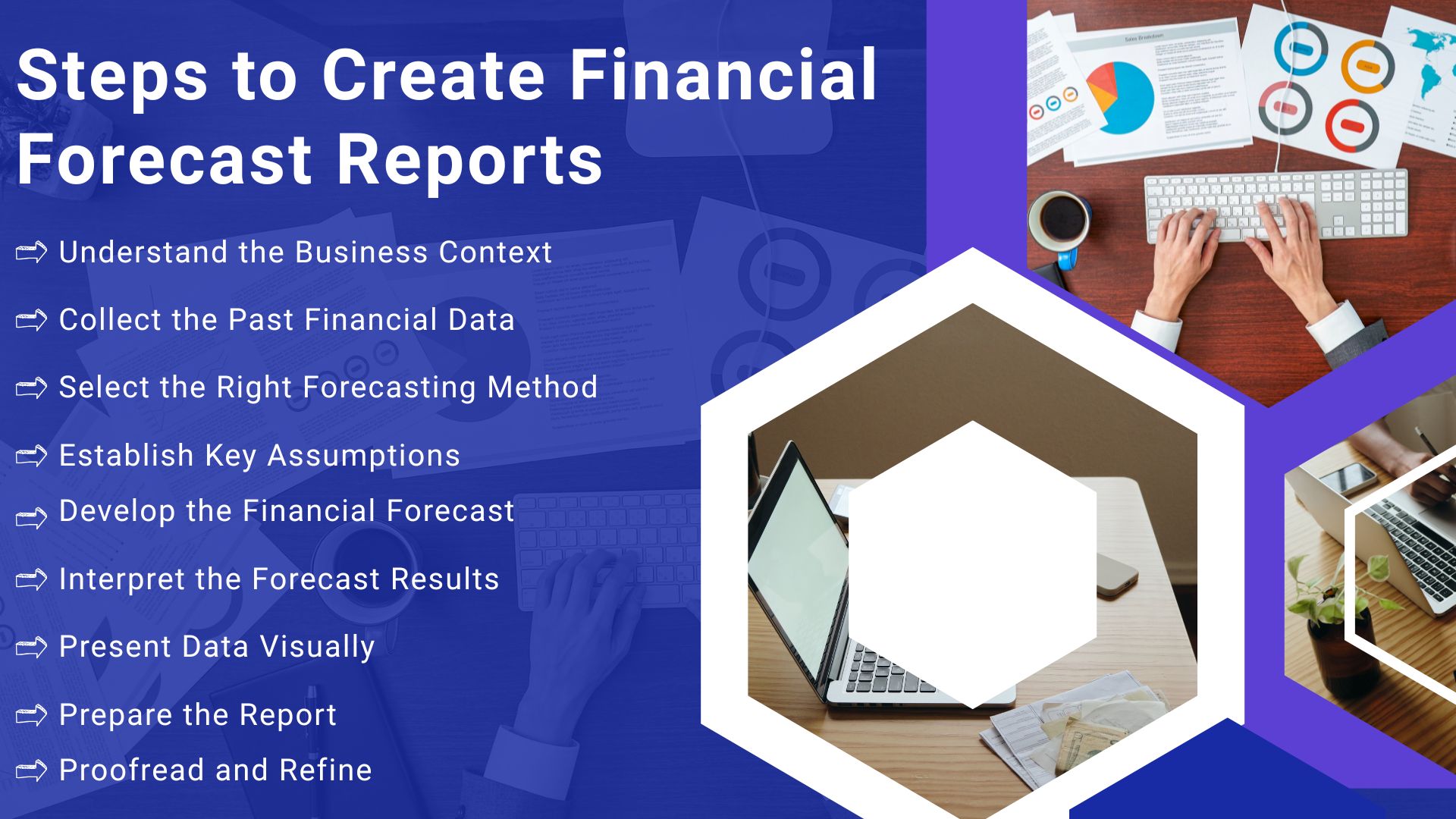Financial forecasting is the process of predicting a business’s future financial performance. To create financial forecast reports for business assignments, start by understanding the context. Next, gather data, choose a forecasting method, make assumptions, build projections, analyze results, use visuals, and write a professional report.
Financial forecasting plays a vital role in explaining how companies plan for the future. If you are pursuing a degree in business studies, then you must understand financial forecasting. No matter whether you are analyzing a real company or working on a complex case study, financial forecast reports are a key part of business assignments. These reports will typically show what a company’s future finances might look like by using past data, current trends, and plans for the future. Do you wonder how to create financial forecast reports for your business assignments? If yes, then read this blog and understand the steps. Here, we have discussed what financial forecasting is, its types, why it matters for business growth, and the steps to create a clear and useful forecast report.
What is Financial Forecasting?
Financial forecasting means predicting how a business will perform financially in the future. It includes studying past financial records, current market trends, and the company’s own plans to make smart guesses about future income, spending, cash flow, and profits.
These forecasts are usually part of a larger business plan and help guide decisions for managers, investors, and other stakeholders. They offer clear, number-based insights that help businesses plan earlier and get ready for what is to come.
Financial forecasting comes in various forms. The most common types of financial forecasting are revenue forecasting, expense forecasting, cash flow forecasting, and balance sheet forecasting. Each of these forecasting types serves a specific purpose in business planning.
Why Financial Forecasting is Essential for Business Growth
Financial forecasting is essential for directing business decisions and supporting sustained growth. Here is why it matters so much:
- Forecasting helps business leaders set achievable goals, a growth plan, and get ready for financial challenges.
- Investors and stakeholders use forecasts to understand how much profit they might get and if the company is stable.
- It helps create budgets by estimating how much money will come in and where it should be spent.
- Forecasting helps businesses manage risks early by showing possible money shortages or extra funds.
- Clear financial predictions help businesses work more efficiently, reduce waste, and focus on important tasks.
Financial forecasting holds several benefits. Hence, every business student needs to learn how to create accurate financial forecast reports. Moreover, by preparing it, you can showcase your ability to analyze data and your grasp of key financial management concepts. With that knowledge, you can even offer Financial Management Assignment Help services to students who are unaware of financial forecasting.
Steps to Create Financial Forecast Reports

Here, let us go through the steps to prepare an effective financial forecast report for your business assignment.
1. Understand the Business Context
Before you start your financial forecasting, make sure to understand the business you are working with. No matter whether you are examining a real company or a business case, take time to learn about the industry, customers, competitors, and past performance.
Ask yourself questions like:
- What are the main ways the business makes money?
- What costs does it have?
- Are there times when sales go up or down?
- What are the usual standards in the industry?
Usually, knowing these details will help you make better assumptions and create a more accurate forecast.
2. Collect the Past Financial Data
Good financial forecasting needs reliable past data. So, after you understand the business context, gather income statements, balance sheets, and cash flow reports from the last two or three years. Specifically, pay attention to things like revenue patterns, different types of expenses, cost of products sold, profit margins, and how money moves in and out of the business. These numbers will be the base for your future predictions.
3. Select the Right Forecasting Method
There are two main ways to do financial forecasting. The first is quantitative forecasting, which uses past data and math models to predict the future. This works well when you have good, reliable data, and methods like time series analysis, regression, and moving averages are commonly used. The second is qualitative forecasting, which relies on expert opinions, market research, and different possible scenarios. This is useful for new businesses or when there isn’t much data available. For most business assignments, combining both methods often gives the best results, depending on what data you have.
4. Establish Key Assumptions
Every forecast relies on certain assumptions, which you need to clearly explain in your report and support with facts or research. Examples of these assumptions could be expected growth rates like a 10% increase in sales each year, plans to enter new markets, changes in inflation or currency values, and shifts in fixed or variable costs. Generally, having strong, reasonable assumptions is a key to creating a trustworthy forecast.
5. Develop the Financial Forecast
Next, make your financial projections. Begin by estimating future sales based on what you project you will sell and at what prices. Next, lay out your expenses by dividing them between fixed and variable. Then, forecast how cash will come in and go out each month or quarter. Next, determine your anticipated profit by subtracting costs from revenue. Also, project the assets, debt, and owner’s equity into the future. Keep in mind that you can use tools like Excel or Google Sheets to keep your numbers ordered, apply formulas, and try out scenarios.
6. Interpret the Forecast Results
Once you have completed your projection, spend time interpreting what the findings tell you. Highlight key points such as when the company will begin to make a profit, periods during which cash may be scarce, the break-even point, any financial danger, and how to manage it. This type of analysis will strengthen your report and demonstrate that you are considering the figures seriously.
7. Present Data Visually
Present your findings clearly by using tables, charts, and graphs. Visuals will make complex data more comprehensible and give a more professional appearance to your report. For example, you may use line graphs to illustrate revenue increase, bar graphs to compare expenses, pie charts to break down costs, and timelines to monitor cash flow.
8. Prepare the Report
Your report must have a logical structure containing a number of essential parts. Begin with an executive summary summarizing the key findings and projections. Follow with an introduction that describes the business and its objectives. Thereafter, outline how you developed the projection in the methodology section. Enumerate all the assumptions you used clearly. Provide detailed financial projections containing charts and tables in the financial forecasts section. Follow this with an analysis that explains what the results mean and their possible impact. Finally, end with a conclusion that shares your main thoughts, recommendations, and any limitations of the forecast.
9. Proofread and Refine
After writing your report, thoroughly review it for accuracy, consistency, and clearness. Ensure the report is easy to read and that all numbers are accurate, assumptions are rational, and the report is consistent. In case it is tough for you to enhance the quality of the report, you can obtain Assignment Help Online from finance professionals. They will help you review your report and make it flawless.
The Bottom Line
Creating a financial forecast report is not just about numbers; it projects potential for the future through data and reason. If you follow the guidelines provided in this blog, you can come up with lucid, data-driven reports with excellent financial insight. But practicing daily is the key to enhancing this ability. If you are still confused about how to create a financial forecast report, then contact the Business Assignment Help experts on our team. They will walk you through all that is incorporated in financial forecasting.



